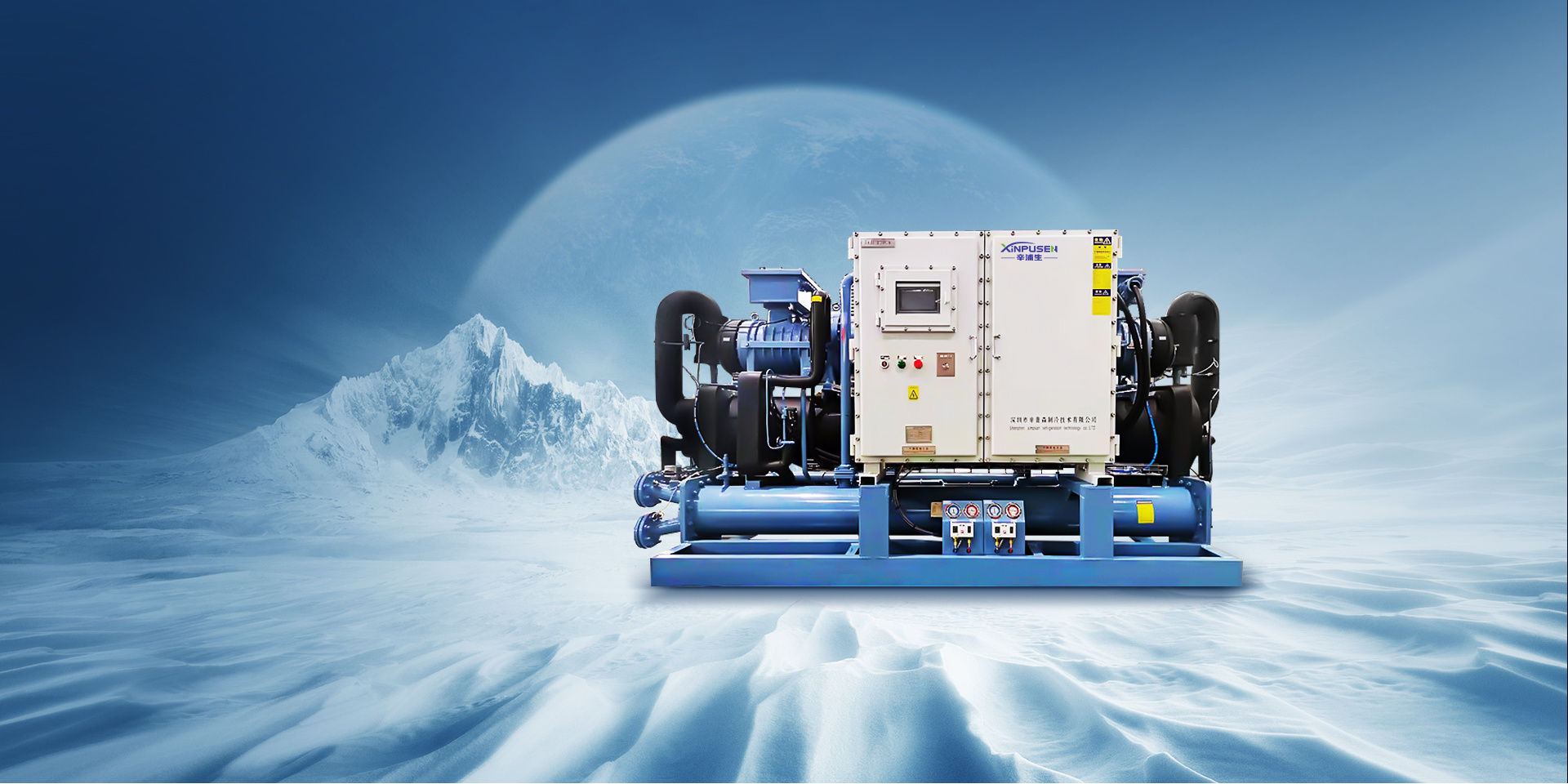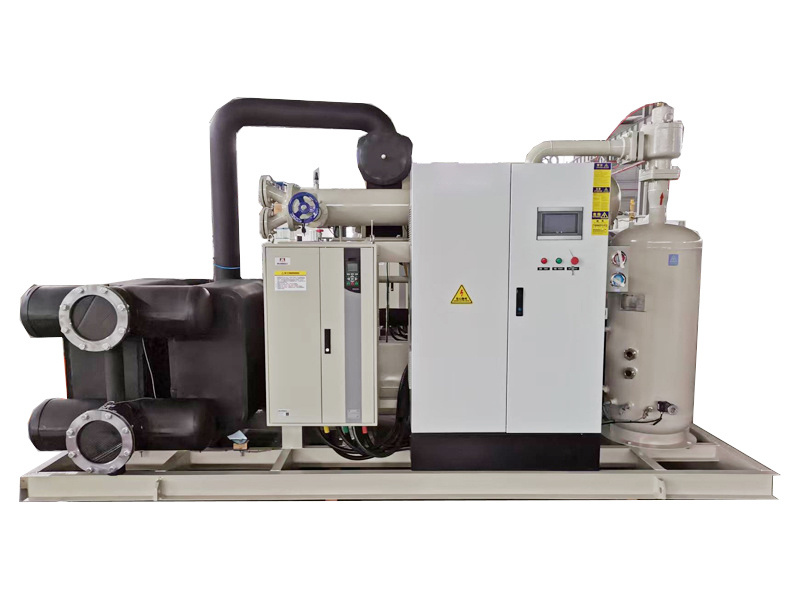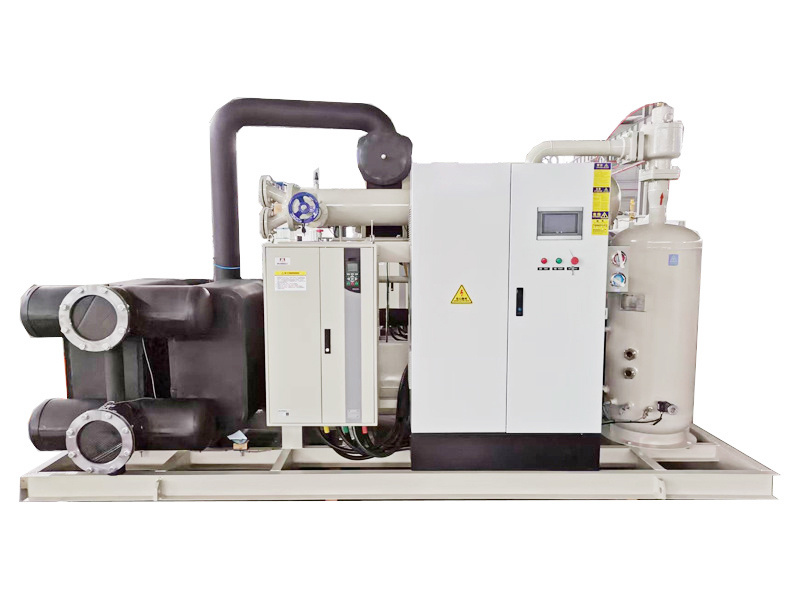Unlocking Efficiency: The Benefits of Energy-Saving Chiller Units
2025-06-25 13:00
Unlocking Efficiency: The Benefits of Energy-Saving Chiller Units
Table of Contents
- 1. Introduction to Energy-Saving Chiller Units
- 2. What is an Energy-Saving Chiller Unit?
- 3. The Importance of Energy Efficiency in Industrial Cooling
- 4. Key Benefits of Energy-Saving Chiller Units
- 4.1 Cost Savings on Energy Bills
- 4.2 Reduced Environmental Impact
- 4.3 Improved Reliability and Longevity
- 4.4 Enhanced Performance and Productivity
- 5. How to Choose the Right Energy-Saving Chiller Unit
- 6. Maintenance and Care for Energy-Saving Chillers
- 7. Case Studies: Successful Implementations
- 8. Frequently Asked Questions
- 9. Conclusion
1. Introduction to Energy-Saving Chiller Units
In today’s fast-paced industrial environment, efficiency is paramount. As companies strive to reduce costs and improve operations, the demand for **energy-saving chiller units** has surged. These innovative systems not only provide effective cooling solutions but also deliver significant long-term benefits. In this article, we will delve into the numerous advantages of energy-saving chiller units, exploring their impact on operational efficiency, cost savings, and environmental responsibility.
2. What is an Energy-Saving Chiller Unit?
Energy-saving chiller units are advanced cooling systems designed to efficiently remove heat from industrial processes. They utilize various technologies—including variable-speed drives, efficient compressors, and advanced heat exchangers—to optimize energy consumption. Unlike traditional chillers, energy-saving models are engineered to minimize electricity use while maintaining optimal performance, making them a smart choice for modern businesses.
3. The Importance of Energy Efficiency in Industrial Cooling
Energy efficiency is crucial in industrial cooling for several reasons. First, it directly impacts operating costs, which can account for a substantial portion of a company’s budget. Second, with growing concerns about climate change and environmental sustainability, businesses are increasingly held accountable for their energy consumption and carbon footprints. Implementing energy-saving chiller units is a proactive step toward achieving both economic and ecological goals.
4. Key Benefits of Energy-Saving Chiller Units
Energy-saving chiller units offer a wide array of benefits that can transform how businesses approach their cooling needs. Below are some of the most significant advantages:
4.1 Cost Savings on Energy Bills
One of the most compelling reasons to switch to energy-saving chiller units is the potential for **substantial cost savings** on energy bills. Traditional chillers can consume a significant amount of electricity, leading to high operational costs. Energy-efficient models, on the other hand, are designed to use less energy while delivering the same level of cooling. According to industry studies, businesses can save up to **30-50%** on their energy costs by upgrading to energy-saving chillers.
4.2 Reduced Environmental Impact
The transition to energy-saving chiller units also contributes to a **reduced environmental impact**. By consuming less electricity, these systems help lower greenhouse gas emissions associated with electricity generation. Companies implementing energy-efficient cooling solutions demonstrate their commitment to sustainability, which can enhance their brand reputation and facilitate compliance with environmental regulations.
4.3 Improved Reliability and Longevity
Energy-saving chiller units are often constructed with advanced components that provide increased reliability and durability. By reducing wear and tear through optimized performance, these chillers can achieve a longer lifespan compared to traditional units. This longevity translates to fewer replacements and repairs, further enhancing overall cost-effectiveness.
4.4 Enhanced Performance and Productivity
Efficient cooling solutions lead to improved operational performance. Energy-saving chiller units maintain consistent temperature control, ensuring that industrial processes operate smoothly. This reliability not only boosts productivity but also minimizes downtime, allowing businesses to meet production targets and maintain quality standards.
5. How to Choose the Right Energy-Saving Chiller Unit
Selecting the right energy-saving chiller unit is critical for maximizing benefits. Here are several factors to consider:
5.1 Understand Your Cooling Requirements
Assess your facility's cooling load and specific needs. Conduct a thorough analysis to determine the required cooling capacity and the conditions the chiller will operate under.
5.2 Consider Energy Efficiency Ratings
Look for chillers that have high energy efficiency ratings, such as EER (Energy Efficiency Ratio) and COP (Coefficient of Performance). Higher ratings indicate better efficiency and lower operating costs.
5.3 Evaluate Technology Features
Consider chillers equipped with advanced technologies, such as variable-speed drives and smart controls, which can adapt to varying cooling demands and enhance overall efficiency.
5.4 Assess System Compatibility
Ensure that the selected chiller unit is compatible with your existing systems and infrastructure. Proper integration is essential for achieving optimal performance.
5.5 Consult with Experts
Engaging with a specialist or consultant can provide valuable insights into selecting the most suitable energy-saving chiller unit based on your unique operational needs.
6. Maintenance and Care for Energy-Saving Chillers
To ensure optimal performance, regular maintenance and care are essential for energy-saving chiller units. Here are some best practices:
6.1 Schedule Routine Inspections
Conduct routine inspections to identify potential issues before they escalate. Regular check-ups can prolong the life of your chiller and maintain efficiency.
6.2 Clean Components Regularly
Dirt and debris can impede airflow and heat exchange efficiency. Ensure that coils, filters, and other components are cleaned regularly to maintain optimal performance.
6.3 Monitor System Performance
Utilize monitoring tools to track energy consumption and system performance. Identifying trends can help pinpoint inefficiencies and guide maintenance efforts.
6.4 Consult Professional Technicians
Involve trained technicians for servicing and repairs. Their expertise ensures that any issues are addressed promptly and correctly.
7. Case Studies: Successful Implementations
Numerous companies have successfully integrated energy-saving chiller units into their operations, yielding impressive results. Below are a few noteworthy examples:
7.1 Manufacturing Facility Upgrade
A leading manufacturing facility replaced its outdated chiller with an energy-efficient model, achieving a **40% reduction** in energy costs while also improving production efficiency.
7.2 Food Processing Plant
A food processing plant implemented energy-saving chillers, resulting in enhanced temperature control, reduced spoilage, and a **20% decrease** in energy consumption, significantly lowering operational expenses.
7.3 Data Center Cooling Solutions
A data center upgraded to energy-efficient chillers with smart controls, leading to improved cooling management and a **30% reduction** in energy bills, all while maintaining optimal equipment performance.
8. Frequently Asked Questions
8.1 What is the average lifespan of an energy-saving chiller unit?
The average lifespan of energy-saving chiller units can range from **15 to 25 years**, depending on maintenance and usage conditions.
8.2 How much can I save by switching to an energy-saving chiller?
Businesses typically experience energy savings of **30-50%** when upgrading to energy-saving chiller units.
8.3 Are energy-saving chillers more expensive to install?
While the initial investment may be higher, the long-term savings on energy bills can offset these costs within a few years.
8.4 Can I retrofit my existing chiller to improve efficiency?
In many cases, retrofitting options are available, such as adding variable-speed drives or upgrading components, to enhance the efficiency of existing chillers.
8.5 How do energy-saving chillers impact environmental sustainability?
Energy-saving chillers reduce electricity consumption and greenhouse gas emissions, contributing to a more sustainable industrial environment.
9. Conclusion
Energy-saving chiller units represent a transformative opportunity for businesses seeking to enhance their operational efficiency while prioritizing sustainability. By embracing these advanced cooling solutions, companies can achieve substantial cost savings, reduce their environmental footprint, and improve overall performance. As the industrial landscape evolves, investing in energy-efficient technologies will not only unlock immediate benefits but also position organizations for long-term success in a competitive market. Embrace the future of cooling with energy-saving chiller units, and unlock the efficiency your operations deserve.
Previous: Maximizing Efficiency and Sustainability with Energy-Saving Chiller Units
More Information
2025-11-03
Understanding Ultra-Low Temperature Cascade Chillers: A Comprehensive Guide
Ultra-low temperature cascade chillers are specialized cooling systems designed to achieve and maintain extremely low temperatures, often well below the freezing point of water. These systems are critical in various industrial applications, including scientific research, pharmaceuticals, and certain manufacturing processes. Understanding how these chillers work and their benefits can help industri
2025-10-27
Unlocking the Benefits of Ultra-Low Temperature Cascade Chillers in Industry
Unlocking the Benefits of Ultra-Low Temperature Cascade Chillers in Industry
Introduction to Ultra-Low Temperature Cascade Chillers
In the realm of industrial refrigeration, **ultra-low temperature cascade chillers** are transforming how businesses manage temperature-sensitive processes. These advanced cooling systems are not merely a trend; they represent a significant shift in how industries t
2025-10-20
china double-stage low temperature chiller
Discover the ultimate cooling solution with our advanced Double-Stage Low Temperature Chiller, designed for applications requiring extreme precision and power. This specialized equipment utilizes a sophisticated two-stage refrigeration cycle to deliver outstanding performance where it matters most
2025-10-20
Understanding Double-Stage Low Temperature Chillers: Efficiency and Applications
Double-stage low temperature chillers represent a vital component in the realm of industrial refrigeration, particularly for applications requiring precise cooling at lower temperatures. These chillers are designed to operate effectively in environments where standard cooling systems may falter, providing a reliable solution for industries such as pharmaceuticals, food processing, and chemical man
2025-11-03
Understanding Ultra-Low Temperature Cascade Chillers: A Comprehensive Guide
Ultra-low temperature cascade chillers are specialized cooling systems designed to achieve and maintain extremely low temperatures, often well below the freezing point of water. These systems are critical in various industrial applications, including scientific research, pharmaceuticals, and certain manufacturing processes. Understanding how these chillers work and their benefits can help industri









 CN
CN EN
EN




